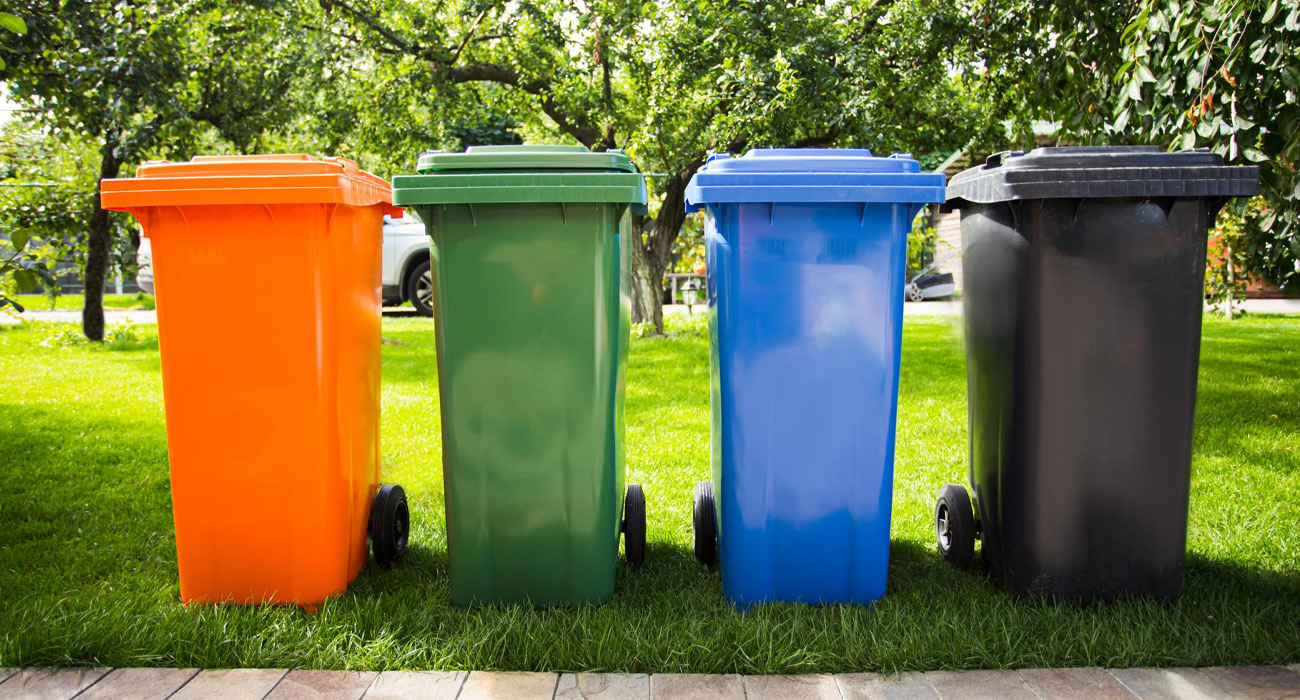Eliminate Trash Can Mold
Garbage can maintenance probably isn’t a top concern for most of us when tackling household chores. It’s more of an out-of-sight, out-of-mind relationship built around convenience. They’re there to hold all of the items we no longer want in our homes, and we’ve got to take those bins out to the curb occasionally. I don’t know about you, but we are a “trash can in the garage” type of family. Who wants to run out in the rain or cold to throw out a poopy diaper?
The problem with keeping the bin in the garage is that without proper care, though, these holders of all things garbage might be harboring a deep, dark secret that threatens your health. We’re talking about mold in trash cans.

More About Mold in Trash Cans
There are over 100,000 species of mold identified so far, and they all reproduce by creating microscopic spores that are released into the air. These tiny seed-like spores then travel wherever that breeze takes them. Their dream is to land in a nice, habitable little location that they can colonize and call home. All of which isn’t a problem when that cozy place is outdoors (mold is incredibly important for natural processes like decomposition).
This growth doesn’t always occur outdoors, though. It just so happens that our homes often offer the perfect little environments for mold spores to transition into the world of the living. If the conditions are right, that is. When a spore flies in, finds this habitable space, and puts down roots, it will immediately begin to produce more and more spores. Some species can also produce microscopic toxins called mycotoxins that they release when they feel threatened. The problem is that, unlike an outdoor space where there’s plenty of room for all of these particles to disperse and not cause problems, our homes essentially trap these spores and toxins within the confines of those walls.
Picture a snow globe and you’ve got a pretty good idea of what this looks like. For this indoor growth to occur, a mold spore only needs four ingredients for success:
- Oxygen (this barely counts, which is why mold can grow in walls)
- Temperature (most species prefer temperatures ranging from 40 to 90 degrees Fahrenheit, but some can survive in extremes)
- Food (mold is like a raccoon, it eats anything)
- Moisture (typically, the missing piece of the moldy puzzle)
Can The Smell of my Trash Can Hurt Me?
When we encounter a few spores and toxins throughout the day, it doesn’t usually cause an issue. Our immune system will descend, surround the invader, and get rid of it ASAP. Mold in trash cans, though, means that all of those particles are swirling around your kitchen and making their way to other portions of the home. Another real issue with indoor mold growth is that it skyrockets the chances that a spore will stumble onto another habitable location, creating a second, third, and fourth mold factory.Now, your immune system isn’t battling a few particles every day; it’s fighting a war on all sides. Every time you take a breath when you’re inside your home, it’s filled with spores, mold particles, and potentially toxins. When it comes to mold in trash cans, bacteria is a real threat too and could be adding to the exposure catastrophe. All of these foreign particles can cause the immune system to lag, malfunction, or just get overrun as it tries to kick them out of your body. Researchers are still hard at work attempting to figure out exactly how mold exposure affects our bodies, but several factors play a role, making it difficult to accurately pin down. Genetics, pre-existing conditions, species of mold, length of time exposed, presence of mycotoxins, and volume of mold in the indoor air all play roles.
Some of the most common symptoms of mold exposure include:
- Runny nose
- Cough
- Watery eyes
- Shortness of breath
- Respiratory issues
- Chronic fatigue
- Brain fog
- Neurological problems
- Rashes
- Digestive issues
- Hair loss
The truth is that no two people respond to mold exposure the same way. Some may experience 30 symptoms, and some may have the occasional runny nose. None of these symptoms will be alleviated if the root cause remains in the home, though. That’s why preventing things like mold in trash cans is so important.












